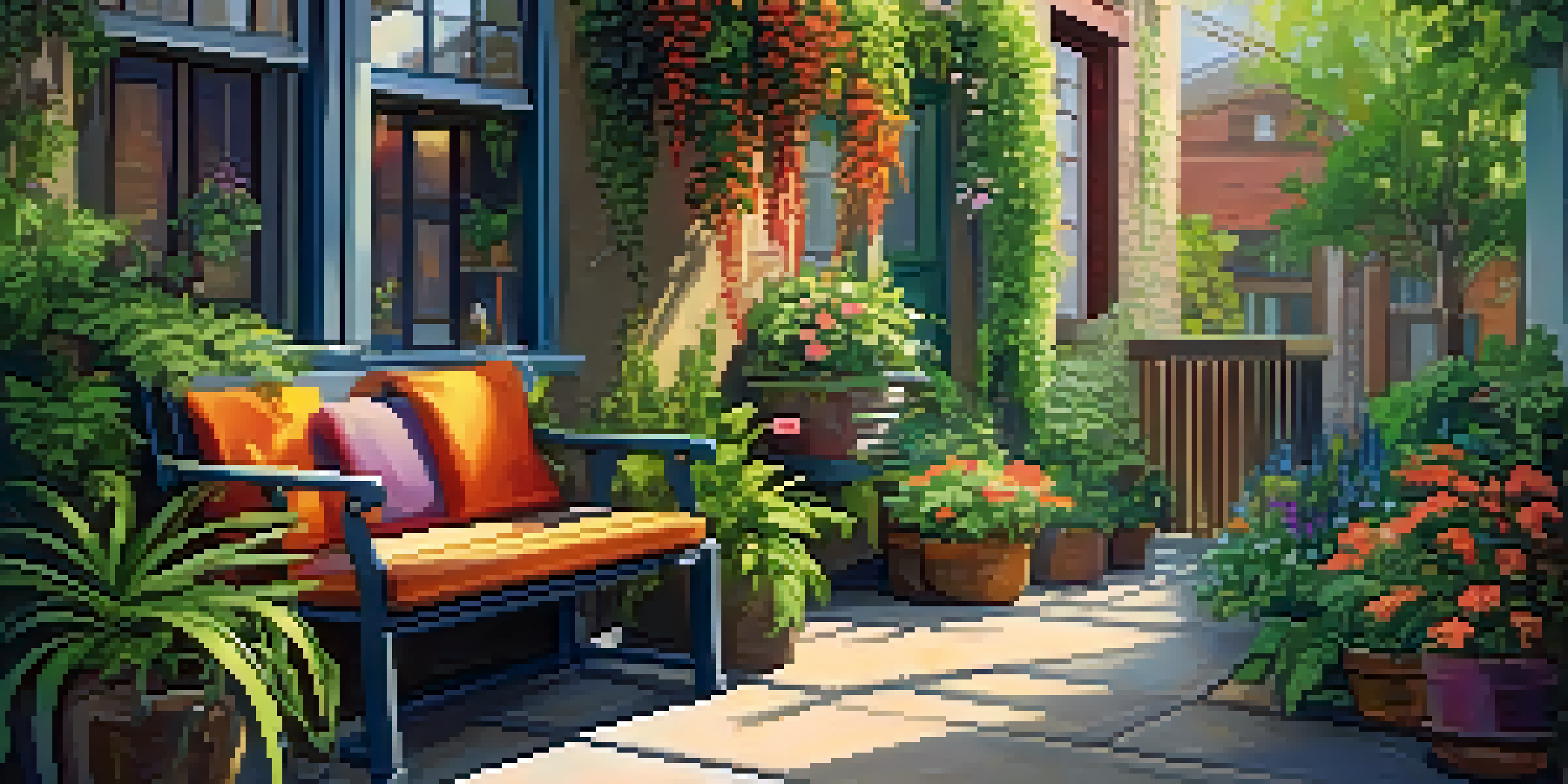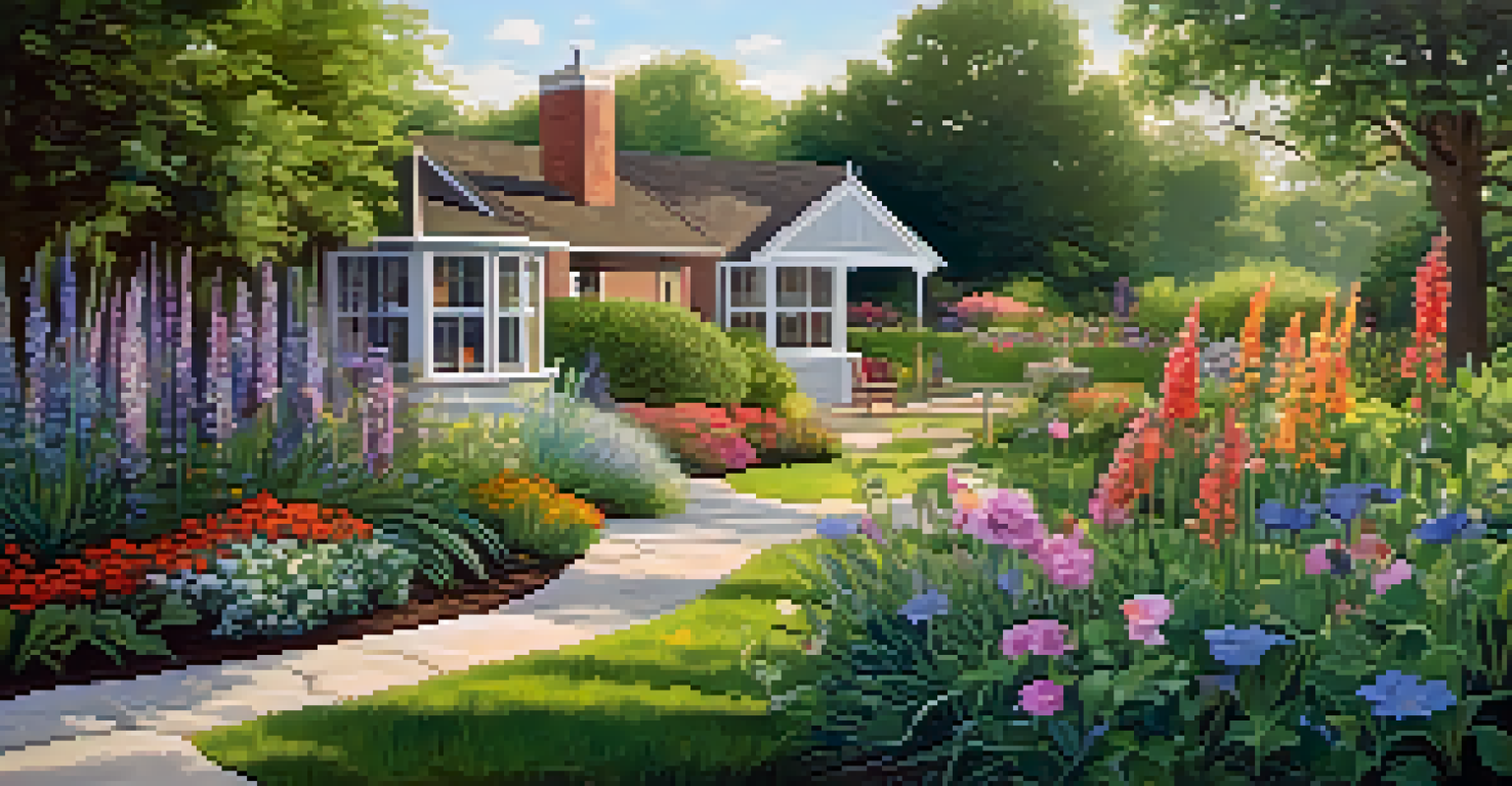Garden Trends: How to Create a Beautiful Outdoor Oasis

Transforming Small Spaces into Lush Retreats
In today's urban environment, many people face the challenge of limited outdoor space. However, this doesn't mean you can't create a beautiful garden oasis. By utilizing vertical gardening techniques, such as wall planters or hanging pots, you can maximize your space while adding a touch of greenery.
The greatest threat to our planet is the belief that someone else will save it.
Think of your small garden as a canvas; every inch counts. Incorporating multi-functional furniture, like benches with storage or foldable tables, also helps to keep the space open and inviting. Additionally, using mirrors can create the illusion of depth, making your garden feel larger than it is.
Lastly, consider adding layers with different plants and textures to create depth. Plants like ferns or trailing vines can soften hard surfaces and make your small garden feel like a lush retreat, inviting you to relax and unwind.
Embracing Sustainable Gardening Practices
Sustainable gardening is more than just a trend; it's a way to care for our planet. By choosing native plants, you reduce the need for excessive watering and fertilizers. Native plants are adapted to the local climate, providing habitat for local wildlife and promoting biodiversity.

Composting is another key aspect of sustainable gardening. By recycling kitchen scraps and yard waste, you create nutrient-rich soil that helps your plants thrive. This not only reduces waste but also cuts down on the need for chemical fertilizers, making your garden healthier.
Maximize Space with Vertical Gardens
Utilizing vertical gardening techniques like wall planters can transform limited outdoor areas into lush retreats.
You can also consider using rain barrels to collect rainwater for irrigation. This simple method conserves water and reduces your utility bills, making it a win-win for both your garden and your wallet.
Incorporating Edible Plants for a Functional Garden
Imagine stepping into your garden and picking fresh herbs or vegetables for dinner. Edible landscaping is a growing trend that blends aesthetics with functionality. By incorporating edible plants, you can enjoy both beautiful blooms and delicious produce right from your backyard.
Gardening adds years to your life and life to your years.
Herbs like basil, rosemary, and mint can be stunning additions to your flower beds. They not only add a pop of color but also offer delightful fragrances. Additionally, consider planting fruit-bearing plants like strawberries or dwarf fruit trees, which can be both ornamental and fruitful.
Creating an edible garden doesn't mean sacrificing style. Raised garden beds or container gardens can be designed to fit seamlessly into your landscape, making your garden both practical and visually appealing.
Designing Relaxation Zones with Comfort in Mind
Creating a relaxing outdoor oasis starts with comfortable seating areas. Choose chairs, benches, or even hammocks that invite you to sit back and enjoy your garden. Adding cushions and throws can enhance comfort and make these spaces more inviting.
Consider the layout of your garden when designing these areas. Position seating to take advantage of beautiful views, whether it's a flower bed, a water feature, or a sunset. This not only enhances the aesthetic but also encourages you to spend more time outdoors.
Embrace Sustainable Practices
Choosing native plants and composting not only benefits the environment but also creates a thriving garden ecosystem.
Don't forget about the ambiance! Soft lighting, such as string lights or lanterns, can create a magical atmosphere during the evenings. Adding these elements transforms your garden into a cozy retreat, perfect for unwinding after a long day.
Creating a Wildlife-Friendly Garden
A garden isn't just for humans; it's also a habitat for various wildlife. By creating a wildlife-friendly garden, you can attract beneficial insects, birds, and even small mammals. This adds life to your outdoor space and helps with pollination and pest control.
Start by planting a variety of flowers, shrubs, and trees that provide food and shelter for wildlife. Native plants are particularly effective, as they are adapted to local ecosystems. Adding features like birdhouses, butterfly gardens, or bee hotels can further enhance your garden's appeal to wildlife.
Water sources, such as small ponds or bird baths, can also attract animals. These features not only serve as a watering hole for creatures but also create a serene environment for you to enjoy while relaxing in your garden.
Utilizing Hardscapes for Structure and Beauty
Hardscaping refers to the non-plant elements in a garden, such as paths, patios, and walls. These features provide structure and can enhance the beauty of your landscape. By incorporating materials like stone, brick, or wood, you can create inviting spaces that draw you in.
Paths can lead visitors through your garden, guiding them to various focal points while helping to define different areas. Consider using curved paths for a more natural flow, or edging with colorful stones to add visual interest.
Create Relaxation Zones Outdoors
Designing comfortable seating areas with thoughtful layouts and soft lighting enhances your garden as a peaceful retreat.
Patios or outdoor dining areas are perfect for entertaining guests or enjoying family meals outdoors. You can personalize these spaces with outdoor rugs, furniture, and even fire pits, making them an integral part of your garden experience.
Choosing the Right Color Palette for Your Garden
Color plays a significant role in how we perceive a garden. Choosing a cohesive color palette can create harmony and enhance the aesthetic appeal of your outdoor space. When selecting plants, consider using complementary colors that work well together, such as blues and yellows or reds and greens.
You can also create focal points by using bold colors in specific areas. This draws the eye and creates interest, making your garden feel more dynamic. For example, a vibrant red flower bed can serve as a stunning backdrop for softer pastel blooms.

Additionally, don't forget about seasonal changes. Incorporating plants that bloom at different times will ensure that your garden remains colorful year-round, providing a visual feast no matter the season.